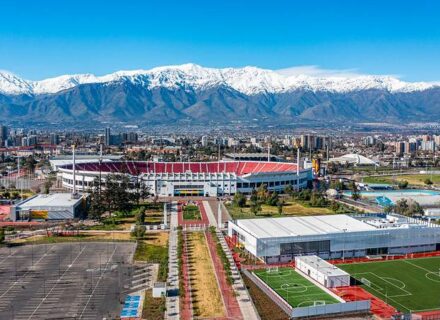Backpacking has become a rite of passage for young people all over the world and South East Asia is a hugely popular backpacking choice for a very good reason.
When you first start to plan your trip the choice and logical considerations can be overwhelming. For this reason, it is a good idea to start with a classic South East Asia backpacking route. Then from there, you can add on diversions and adventures safe in the knowledge the backbone of your trip is organized and practical.
How long you are going to spend on this trip of a lifetime is up to you but I strongly recommend you to take as long as you can. You can save time by utilizing flights between cities.
However, personally, I think this method takes away from one of the best aspects of backpacker travel: The experiences of seeing the landscape change around you as you travel overland.
There are four countries most people will want to include: Thailand, Laos, Cambodia, and Vietnam.
Of course, you can do all these countries on separate trips, or even in pairs but if you have time then the classic backpacker route will take you on a journey through all four countries.
Before departure, you may want to take a look at our recommendation on good sling backpack.
Thailand
#1 Bright and Breezy Bangkok
Most travelers are going to land in Bangkok because there is such a huge range of flights that arrive at this airport.
The city itself is massive and surely everyone will know about the famous Khao San Road immortalized in the movie “The Beach”.
There is more to Bangkok though than the Khao San Road. Make sure you spend a couple of days in the city to explore the temples, museums, parks, markets and have a rest after your long flight.
The city has an excellent website for tourists. Before you travel have a read about the city and then you can discover Bangkok beyond the Khao San Road.
#2 Ancient UNESCO Charm at Ayutthaya
The UNESCO world heritage site – Ayutthaya is one of the best-known sites in Asia and while you are in the region you surely cannot miss seeing the ancient city. I wonder if there is anyone alive who has not seen the images of the ancient city with trees and roots growing through it.
You can reach the city from Bangkok by train, taxi, minivan, and bus. I like to travel by train, as a way to people and landscape watch, even if it is slow.
There are a lot of choices so everyone can find the way best for them. Once you have arrived at the city you will find various backpacker hostels and accommodations to stay in.
#3 Chiang Mai – Temples Abound
Chiang Mai is a wonderful city in Thailand, and there is a nice melting pot of traditional Thai culture juxtaposed with influences from the expats and travelers that live there.
Traveling to Chiang Mai from Ayutthaya by train takes around 10 hours. That makes this section of the backpacker route a perfect opportunity to slow down and visit some less known places between the two.
For example, there are at least ten national parks on the route between #2 and #3. I particularly like the beautiful Si Nakharin park at the Si Nakharin dam.
Once you are in Chiang Mai you can spend a few days exploring the temples and the lively city before heading further North to Chiang Rai.
#4 Chiang Rai – Quiet and Curious
The city of Chiang Rai can often be missed out on traveler’s agenda when they are in a rush.
I like the quiet non-touristy feel to this city. It is only 1.5 hours from Chiang Mai by train and is an easy hop to make in a morning or afternoon. The most famous site in the city must be What Rong Kun the white temple, but the sister Black temple is also worth a visit.
The black temple is a temple like no other. I won’t tell you quite how and ruin the surprise! A visit to the Hill Tribe Museum and Education Center is also well worth a visit while you are in the city.
#5 Chiang Khong – Why not Stay?
The town everyone passes through on their way to Laos.
This makes the town a perfect place to get one last true local Thai feeling before you head into Laos. Definitely, a place to spend some time in my opinion!
Once you are ready to head into Laos you make your way to the bridge crossing, where you complete the process to exit Thailand and then on the other side of the bridge the process to enter Laos. Most nationalities can be given a VISA to Laos on arrival at the border.
Laos
As with Chiang Khong, Huay Xai is very much a town that most travelers pass through, which in my mind entices me to spend a little time there. This town is a good place to start to get to know Laos.
Do some people watching, relax by the Mekong river, take a walk through the town and soak up the atmosphere and architecture.
#7 Ban Pak Nguey – Rural Laos is Where It’s At
Continuing your journey into Laos, as an exciting way to venture into the rural areas and experience a glimpse of daily life, you can take a journey down the Mekong River to the small village of Ban Pak Nguey.
A rustic homestay is arranged and villagers welcome you with a local meal, and a unique cultural experience. This route used to be hardly trodden at all, but more and more people are venturing down the river now. It is a good idea to go now before everyone hears about it!
#8 Luang Prabang and the Pak Ou Caves
Luang Prabang is a UNESCO world heritage city and while you are there you can explore the buildings and architecture that has made the place so memorable. Buddhist temples and colonial architecture juxtapose to create a revealing architectural histogram.
Pak Ou Caves are a relatively small site in Laos, they can be visited in a day from Luang Prabang. Go with an open heart and you might just find yourself moved. The dank quiet caves are filled with thousands and thousands of statues of Buddha.
#9 Paltry Pakse and Natural Playground Don Det
There are many places to see and experiences to have in Laos, don’t rush between Luang Prabang and Pakse.
Take your time and know you are making your way to Pakse! Once you arrive you will find a relatively uninteresting modern city, but a good base to explore some of the more interesting areas in the South of Laos.
From Pakse, you can travel to the famous backpacker’s river island playground Don Det.
Cambodia
#10 Stung Treng Border Crossing Station
From Don Det, you can take a boat to Nakasong and from there a bus to the border crossing into Cambodia. After a bureaucratic palaver, you can get your VISA entry into Cambodia and most people then continue by bus to Siem Reap.
#11 Siem Reap to Sprawling Angkor Wat
Take a few days to acclimatize to Cambodia and discover the small city of Siem Reap. Then when you are ready, take the leap and explore the legendary temple complex of Angkor Wat.
Angkor Wat is a UNESCO world heritage site and seriously you could spend weeks there. Take time to explore slowly, consider options like renting bicycles to feel like you discovered the temples yourself. And don’t forget sunset and sunrise are prime times to explore before the tourist hordes and heat hit.
#12 Beach Bum Jumping Off Point – Sihanoukville
The beaches in Cambodia are some of the most unspoiled in the world, and after your long journey through Laos perhaps it is time to explore the shoreline.
Sihanoukville itself is modern and uninspiring. However, from the town, you can access beautiful white sand beaches, remote, private, and what more I ask does a backpacker need?
#13 The Capital of Cambodia Phnom Penh
Once you have explored along the coastline of Cambodia you can head north to Phnom Penh, the capital of the country. Take some time to explore the capital because the city has lived a dramatic life and has a modern face as well as a historical face.
One highlight for me was the Tuol Sleng Genocide Museum for its bare exposure of human capacity for evil, you have a duty to go and reflect. Then on a lighter-hearted note, you can also visit Wat Ounalom a Buddhist temple that shows after chaos, places and people can be reborn.
Don’t forget you will need to get your Visa to Vietnam at the Vietnamese embassy in Phnom Phen if you haven’t already done so in your home country embassy.
Vietnam
#14 Getting to Ho Chi Minh
The easiest way to get from Phnom Penh to the Ho Chi Minh border crossing is by bus. You can also take a flight to Ho Chi Minh, but as you know I like the overland experience because you feel the journey you make.
However, don’t get caught out! You MUST already have your VISA to Vietnam in your passport, they DO NOT issue Visa’s at the border. You can get your visa at the embassy in Phnom Penh, or in advance at home before you travel.
Once you arrive in Ho Chi Minh (otherwise known as Saigon) take a minute to absorb the change of country and atmosphere. Ho Chi Minh is chaotic, lively, buzzing and all a whirl. Explore, absorb and get ready to head for the hills.
#15 The Hill Retreat of Da Lat
From the busy Ho Chi Minh head to the quieter hill town of Da Lat.
From this location, you can explore the countryside and beautiful landscapes of Vietnam. The town has the feeling of a tropical Europe with some people even referring to it as “Let Petite Paris”. The climate is cooler because of the higher altitude and makes a perfect way to recover from the busy-ness of Ho Chi Minh.
#16 Coastline Hop from An Hoa USA Military Base to Natural Ninh Binh
As you follow the coastline North through Vietnam you can linger, hop and explore to your heart’s content. From small local towns to remote beaches to abandoned military bases, there is plenty to keep you busy and surprised. End your journey in Ninh Binh one of the most stunningly beautiful classic “South Asia” areas I have ever been to.
#17 Oh No It’s Over Already – Hanoi
No doubt your backpacking trip will have flown by in a heady whirl of tropical nature, temples and exotic food, leaving your senses assaulted and begging for more.
Don’t hurry home too soon, take at least a few days to explore the city of Hanoi.
How Many Days does it take to finish the Backpacking Route?
Everybody needs to set their own pace and time frame to backpack through South East Asia.
Personally, I think at least three months should be spent if you want to visit all four countries. If you can take longer, don’t hesitate to do so. The longer you can travel on this backpacker trail, the better.
Then, you have time to take your travels slowly and make diversions. If you can’t spend three months then I would do just one or two countries on the trail and come back to see the others another time.
How Much Does the Route Cost?
Again, this question is very open because everyone needs to set their budget and spend accordingly.
If you stay in 5* hotels, or do a lot of arranged activities your costs are going to be higher. If you keep everything very simple, use public transport, stay in budget accommodation, eat local eats, you can keep the costs very low.
Thailand – A daily budget of 1000 baht is possible. Budget Accommodation is around 600 to 1000 Thai baht (b) per night.
Laos – A daily budget of $50 or less is possible. Budget Accommodation is around $5 to $10 per night.
Cambodia – A daily budget of $50 or less is possible. Budget Accommodation is around $5 to $10 per night.
Vietnam – A daily budget of $40 or less is possible. Budget Accommodation is around $9 to $16 per night.
The Backpacker Banana Pancake Trail
Backpacking in South East Asia has been skyrocketing through the roof over the last 10 years, and where you find banana pancakes on sale you know you are on paths well worn.
Why have the numbers of travelers exploded might you ask? Well, because of the people, the climate, the culture, the adventure, and of course somewhat because of the developing backpacking culture in the west.
Personally, I always like to stray from the trail and sometimes escape from other backpackers, but a good trip follows proven advice and the classic route is classic for a reason.
Of course one of the best things about travel is the opportunity to discover new lands and culture, but also an opportunity to meet with other backpackers (often eccentric characters) along the way.
Conclusion
What are my final words of advice then? Start with the backbone – the classic route, and then make it your own along the way. Don’t be afraid to stray!
What are all your thoughts? Do let me know in the comments? What are your favorite places or experiences in South East Asia? What route did you follow? When can I go back… oh wait, you can’t answer that one. : D.



